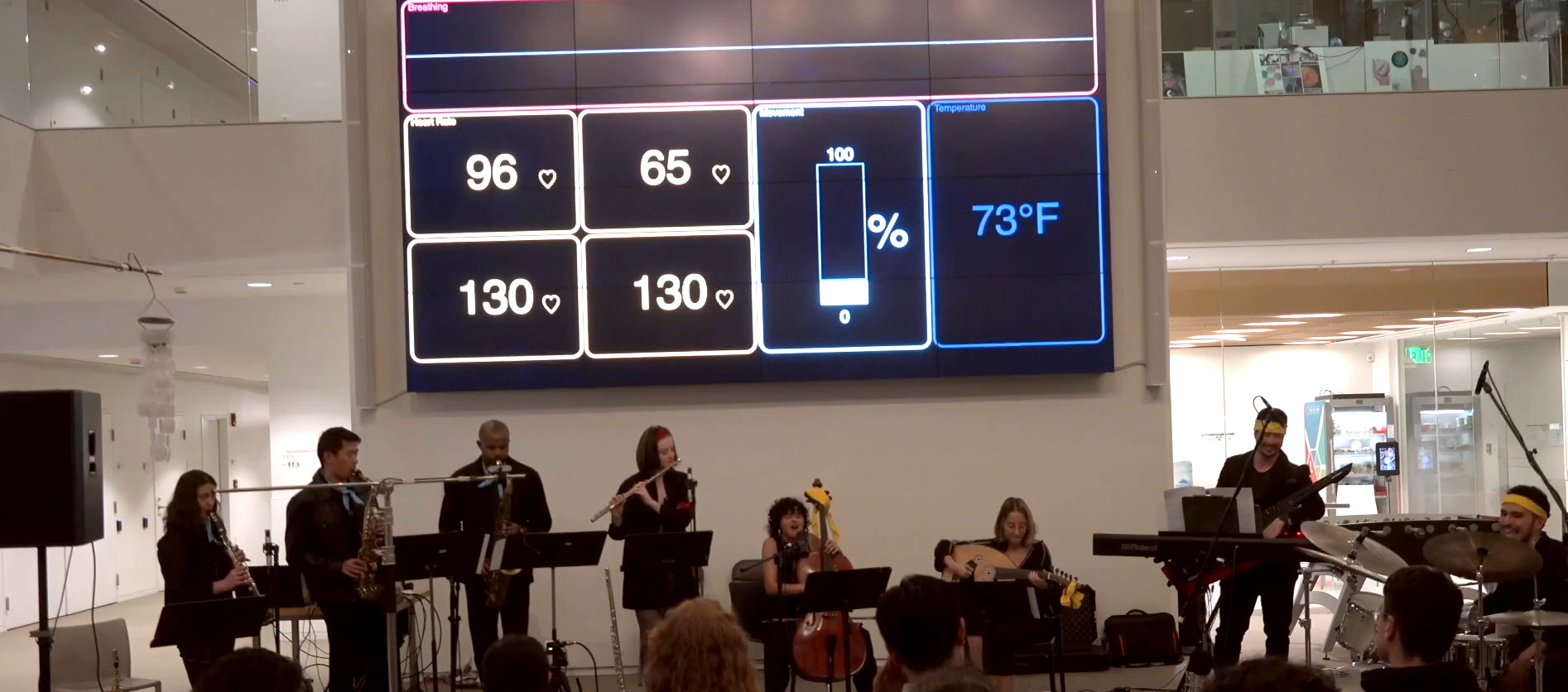Organology
For Biosynth Ensemble
Real-time Biometrics X Sound Synthesis

Program Note:
In the growing field of embodied music cognition, advances in biometric sensing have provided windows into key questions of human musicality and sound perception. What role does the body play in our encounters with music? What mechanisms govern our experiences of sound not only as an auditory phenomenon, but also as a tactile and even proprioceptive one? Bringing together researchers and artists at MIT and beyond, Organology couples collaborative music-making with biometric sensing technologies to tap into the personal and physiological dimensions of some of these questions from cross-cultural perspectives.
Many of the sounds you hear in Organology are powered by the ongoing BioSynth project, an interdisciplinary effort to design an electronic instrument that transforms physiological signals into musical information. Measurements of the players’ biometrics, captured by an array of mounted and wearable sensors, shape the performance by modulating parameters of the sound, including delay, distortion, tempo, and more. Three improvisatory episodes entitled “Gait,” “Breath,” and “Pulse” explore measurements of performers’ fluctuating movements, breathing patterns, and heart rates, respectively, all of which the audience can view on a shared dashboard. But it’s not only ensemble members in control: as a nod to the way that the presence of bodies can drastically alter the acoustics of a space, an infrared camera capturing average body temperatures across the entire room enables audience members to subtly influence reverb effects over the course of the performance.
With ensemble members and audience alike each controlling a distinct “organ”—that is, a unique component of the Frankensteinian BioSynth system—the collective comes to represent one dynamic body, a body that emerges from mindful musical collaboration and latent physiological resonance. Thank you for joining us for this experimental and experiential work, and we hope that you can feel empowered to voice any questions or observations at the talkback following the performance.
Note by Jess Shand

Collaborators:
Jessica Shand (G), co-director, composer, flute
Manuel Cherep (G), co-director
Bahar Badieitabar (Berklee ‘23), oud
Dani Beck (Berklee ‘23), cello/voice
Dexter Callender III (G), tenor saxophone
Rafael Moises Heredia Horimoto (Berklee ‘27), percussion
Mike Jiang (G), keyboard/keytar
Veronica Leahy (Harvard/Berklee ‘23), soprano saxophone/clarinet
Andrew Li (MIT ‘25), alto saxophone
Sam Chin (G), magic effects
Chris Lock (Harvard GSAS ‘24), electronics (Max/MSP)
Ana Schon (G), live sound
Nikhil Singh (G), electronics (Max/MSP)
Cassandra Lee (G), moderator
Acknowledgements:
Contributions by Perry Naseck (G), Alfonso Parra Rubio (G), Jocelyn Riseberg Scheirer (G), Patrick Chwalek (G), Philip Tan (MIT Game Lab), and Levy Lorenzo helped make possible the technical components of this project. Jimmy Day (ML Comms) and Kimaya Lecamwasam (G) provided generous assistance with visual documentation of the process and performance.
Thanks also to Andrea Volpe and Lydia Brosnahan (MIT Office of the Arts), Prof. Miguel Zenon, Fred Harris, Keala Kaumeheiwa, and Riley Vogel (MTA), Prof. Rosalind Picard/Affective Computing, Prof. Tod Machover/Opera of the Future, Prof. Zach Lieberman/Future Sketches, and Visiting Prof. Alaa Algargoosh (ML), Bill Lombardi (ML Facilities), and Clémence Taillandier (ML).
This project has been generously funded by a project grant from the Council for the Arts at MIT (CAMIT).
Taken from program note by Jess Shand